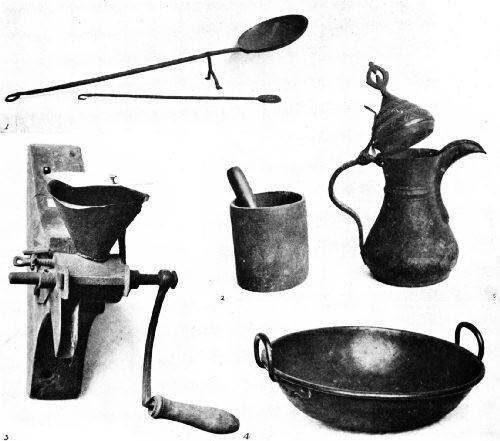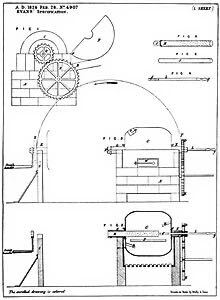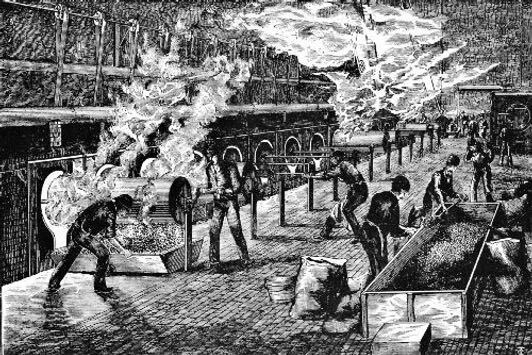Many of us are familiar with the wonderful legend of how Kaldi the goat herder and his prancing goats discovered coffee around the 9th century. Did you ever wonder how and when coffee roasting came about? Was it when Kaldi gave his findings to an Islamic monk who threw the beans in an open fire in disgust? Then after experiencing the pleasing aroma, snatched the beans out of the fire and made the first cup of coffee?
Was it Sheik Omar around the year 1258 C.E. who stumbled across this beautiful plant and grabbed some cherries? Legend has it that he took these curious fruits to his cave and while he was boiling some herbs for his dinner he decided to add some of those beans in the pot. It was quite bitter so he roasted the beans, and returned them to the pot making a delicious spicy coffee.
What we do know is that in this time period between the 12th and 13th centuries coffee roasting was done with rudimentary clay dishes or stoneware over an open flame. By the 15th-century special roasting spoons were used such as the “Bagdad Roasting Pan and Stirrer”.

Around 1650 C.E. the first cylindrical roaster came into existence. Many different forms of roasting came about in the following 200-300 years mostly with cylinders or varying types of frying pans. As we can see, home roasting was the norm.

The Development of Commercial Roasters

By the late 18th century the 3 sided hood was designed to be hung over a hearth for roasting larger quantities of coffee. These probably would have been used in coffee houses or inns. In 1824 Richard Evans of England was granted a patent for a commercial method of roasting coffee. It was a cylinder roaster with improved flanges for constant mixing or turning of the beans while roasting.
The British and Americans were more focused on the commercial roasting business while the French and others focused more on machines for grinding and brewing coffee.
The Carter “Pull-Out” Roaster
In 1846, James W. Carter of Boston patented the very popular “Carter Pull-Out Roaster”. These were large cylinders that sat inside brick ovens. The ovens kept the heat inside and more uniform for improved and even roasts.
These were called “pull-out”s” because the cylinders could be pulled out of the ovens on guides. The head roaster would pull the cylinder out part way and check to see if the beans were ready or not.
Once ready, the cylinder would be pulled out completely. The 9 inch flap which ran the entire length of the cylinder would be opened and beans would be dumped into wooden trays below the cylinder and refilled with green beans. It would take two men equipped with shovels and hoes to stir the hot beans until cooled.
These machines were heated by coal. The original cylinders were not perforated. This came about later. Not all roasting companies had wooden cooling trays to dump the hot beans in. In these cases, the beans were dumped on the floor with water sprinkled on them while the men stirred them.

Many improvements were made on this model throughout the years. Improvements like perforated cylinders, the perforated false bottom on the cooling trays for better cooling, and removing of chaff and small stones. The modern-day roasters were on the way!
Then Along Came Jabez Burns
Jabez Burns had worked in the coffee roasting business for many years before patenting his ground-breaking invention of the roaster with the automatic discharger in 1864. This was the first machine where the cylinder did not have to be removed from the heat to discharge the product. It consisted of a round cylinder within a brick oven.

These machines became very popular and in short order, they could be seen in many of the major coffee roasting centers. Jabez Burns became one of the leading authorities on coffee. He understood the process of roasting beans with the knowledge of his time. For instance, he knew that the first stage of the roast is the evaporation of humidity.
He also understood the fact that different beans have different sweet spots. Some are better with darker roasts where others are better with lighter roasts. This was remarkable at the time because most roasters qualified the roast by the smell, sight and smoke.
He also pioneered the design for better bean cooling. The idea of cooling beans with cool air blowing was becoming popular and quite successful as it not only cooled the coffee, but also blew away the chaff. His idea was to use suction downward through a perforated false floor. This was more uniform and kept the air free of smoke.
German Engineering and Coffee Roasting
In the 1870’s German engineers began showing an interest in coffee machines. In 1877 came the first coffee roaster patent in Germany awarded to G. Tubberman & Son. A dozen more patents were issued between the years 1880-1882.

Alexius Van Gulpen contributed greatly to the improvement of coffee roasters. Throughout the years his inventions included: circular air fans enabling fresh air to the cylinders, fire dampening devices, cooling exhaust systems and the all important moving mixer to expel the coffee from the cylinder into a circular cooler, much like today’s equipment. In 1892 a patent was issued to Theodore Von Gimborn for using a gas flame in a rotating cylinder.
Modern Day Roasters
Coffee roasting has come a long way since the Bagdad Roasting Pan and Stirrer. In today’s computerized world it is no surprise to see how this technology has benefited the world’s most pleasurable drink.
Almost all roasters today roast with very high precision. Most if not all use gas. Thanks to computers, it is now possible to program an unlimited amount of profiles for your specific tastes, types of beans or blends.
Consistency was always hit and miss with so many factors such as outside temperature, humidity in the air among other things. With many quality roasters you can program your roaster to any profile imaginable with perfect consistency, always.

We can honestly say that coffee roasting has reached its zenith. Of course, there will always be some type of improvements in time, mostly cosmetics. We most certainly have a lot to owe to the ingenuity and craftsmanship of coffee enthusiasts before us.
Ref. All About Coffee by William H. Ukers With kind permission of Project Gutenberg.


